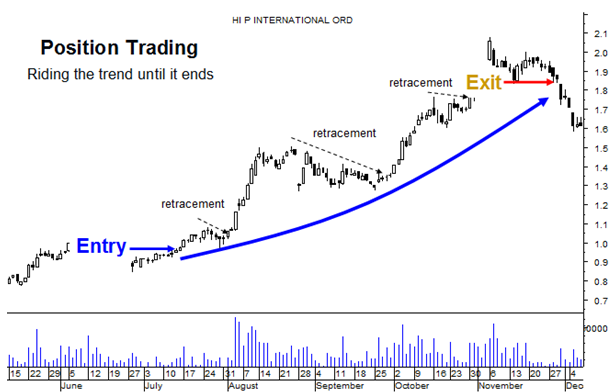Introduction:
In the world of finance, there are different ways to trade and invest. One such approach is positional trading, which involves holding onto investments for a long time to benefit from big price movements. In this blog post, we’ll explain what positional trading is, explore how it can potentially help you grow your investments.
What is Positional Trading?
Positional trading is a strategy where you buy stocks or other assets and hold onto them for a while, usually weeks or months. Unlike short-term trading, like day trading or swing trading, positional trading aims to profit from major price trends that can take a long time to develop. It requires patience and discipline because you have to withstand temporary ups and downs in the market.
“That is about all I have learned—to study general conditions, to take a position and stick to it.”
– Edwin Lefèvre, Reminiscences of a Stock Operator
Key Strategies for Positional Trading:
- Choosing the Right Stocks: To succeed in positional trading, it’s important to select stocks with good growth potential. You can do this by studying the financial health of companies, their future prospects, and how they compare to their competitors. By picking strong companies, you increase your chances of earning significant profits over time.
- Using Technical Analysis: Positional traders also use technical analysis to find the best times to enter and exit their trades. This involves analyzing price charts, trend lines, support and resistance levels, moving averages, and other indicators. These tools provide insights into a stock’s past price movements and help you spot potential turning points or trend reversals.
- Setting Realistic Targets: Positional trading involves setting achievable profit targets and stop-loss levels. Profit targets are predetermined levels at which you plan to sell your investments to lock in your gains. Stop-loss orders are placed below your purchase price to limit your losses if the trade goes against you. By deciding these levels in advance, you can effectively manage risk and protect your money.
- Being Patient and Disciplined: Successful positional traders understand the importance of patience and discipline. They wait for the right opportunities and avoid making impulsive decisions based on short-term market fluctuations. Positional trading requires a long-term mindset, giving your trades enough time to reach your profit targets.
- Managing Risk: Positional traders use risk management techniques to protect their investments. This includes diversifying their portfolio by investing in different stocks or asset classes. It’s also important to allocate the right amount of money to each trade based on your risk tolerance and the volatility of the stock.

Benefits of Positional Trading:
Positional trading offers several benefits for traders and investors:
- Lower Transaction Costs: Compared to frequent trading, positional trading involves fewer transactions, which means you pay less in brokerage fees and other costs.
- Potential for Higher Returns: By capturing major price trends, positional traders have the potential to earn significant profits over time. Successful trades that ride long-term market movements can result in impressive returns.
- Flexibility: Positional trading gives you the flexibility to manage your investments without constantly watching the market. This is especially appealing if you can’t devote all your time to trading.
Positional trading is a strategy that allows you to take advantage of long-term market trends. By combining fundamental analysis, technical analysis, risk management, and patience, you can potentially grow your investments.

Leave a Reply